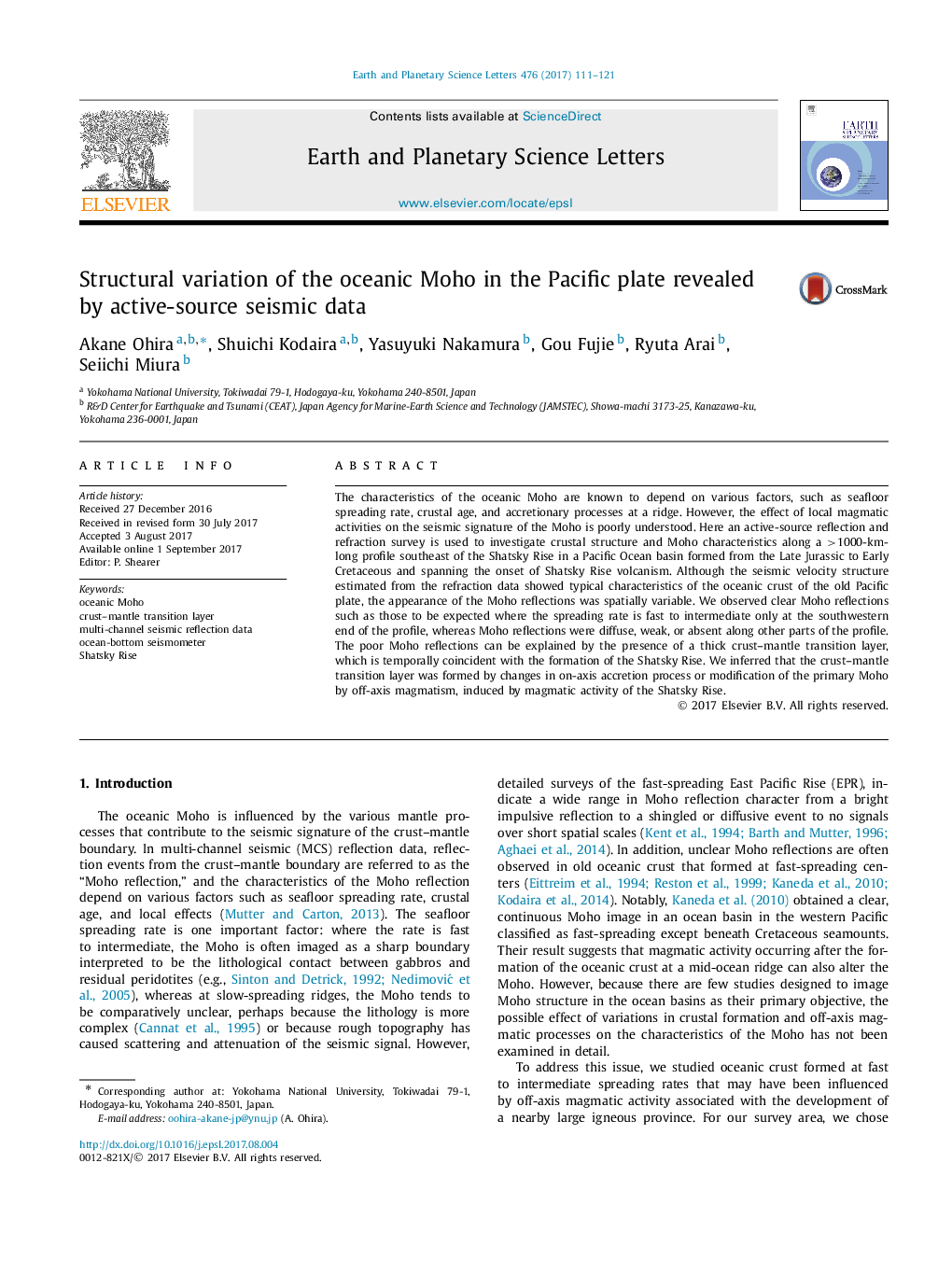| Article ID | Journal | Published Year | Pages | File Type |
|---|---|---|---|---|
| 5779640 | Earth and Planetary Science Letters | 2017 | 11 Pages |
Abstract
The characteristics of the oceanic Moho are known to depend on various factors, such as seafloor spreading rate, crustal age, and accretionary processes at a ridge. However, the effect of local magmatic activities on the seismic signature of the Moho is poorly understood. Here an active-source reflection and refraction survey is used to investigate crustal structure and Moho characteristics along a >1000-km-long profile southeast of the Shatsky Rise in a Pacific Ocean basin formed from the Late Jurassic to Early Cretaceous and spanning the onset of Shatsky Rise volcanism. Although the seismic velocity structure estimated from the refraction data showed typical characteristics of the oceanic crust of the old Pacific plate, the appearance of the Moho reflections was spatially variable. We observed clear Moho reflections such as those to be expected where the spreading rate is fast to intermediate only at the southwestern end of the profile, whereas Moho reflections were diffuse, weak, or absent along other parts of the profile. The poor Moho reflections can be explained by the presence of a thick crust-mantle transition layer, which is temporally coincident with the formation of the Shatsky Rise. We inferred that the crust-mantle transition layer was formed by changes in on-axis accretion process or modification of the primary Moho by off-axis magmatism, induced by magmatic activity of the Shatsky Rise.
Keywords
Related Topics
Physical Sciences and Engineering
Earth and Planetary Sciences
Earth and Planetary Sciences (General)
Authors
Akane Ohira, Shuichi Kodaira, Yasuyuki Nakamura, Gou Fujie, Ryuta Arai, Seiichi Miura,
